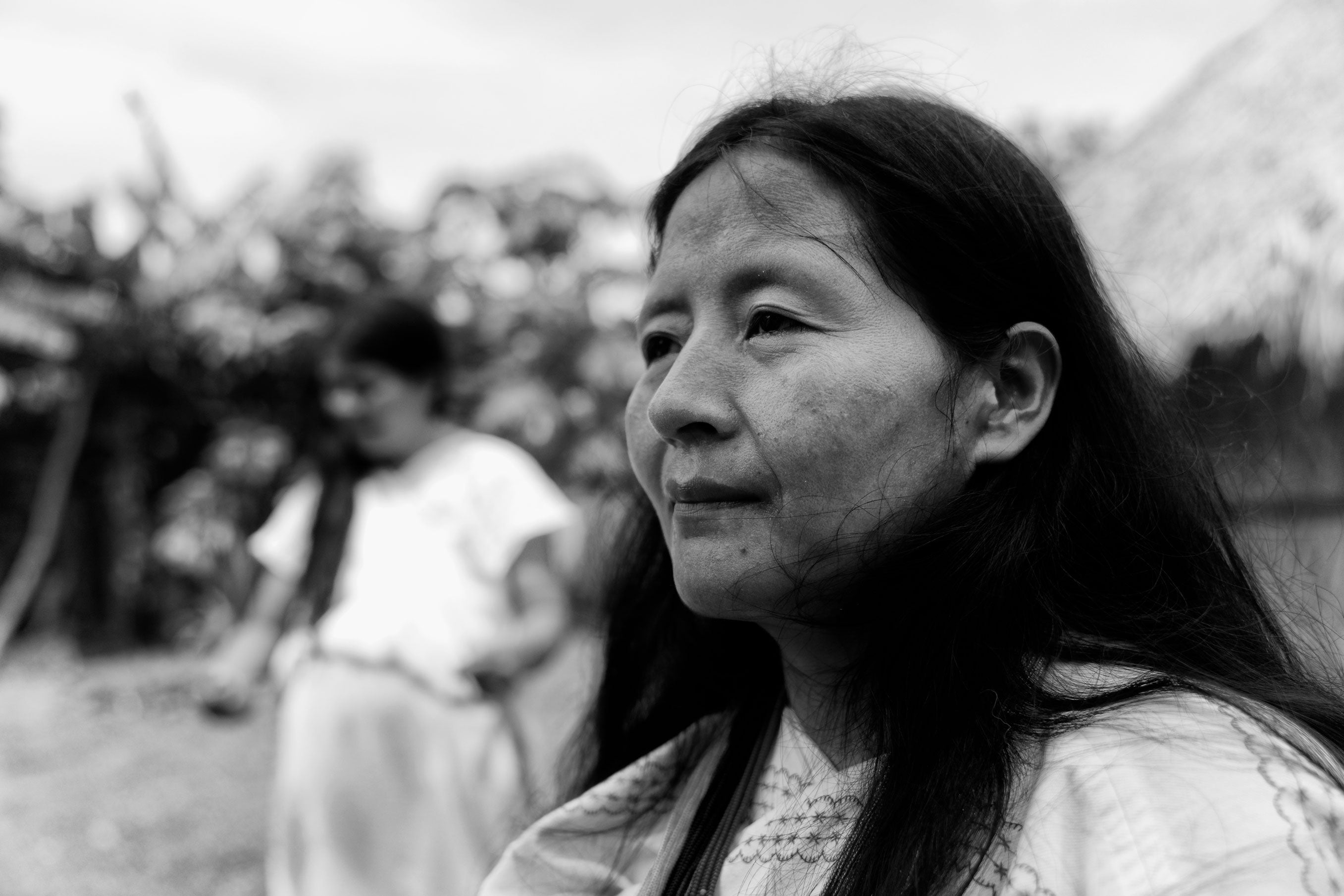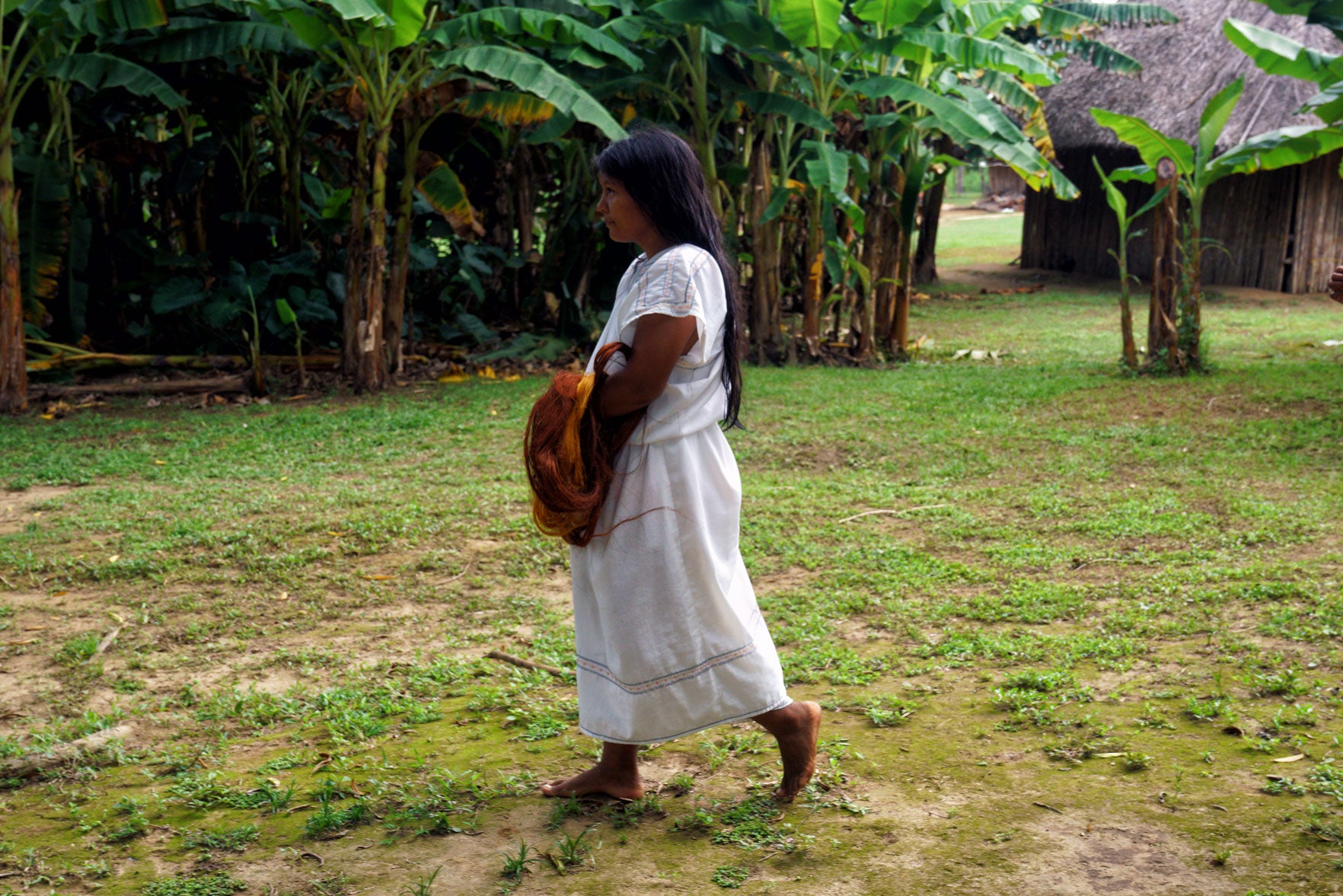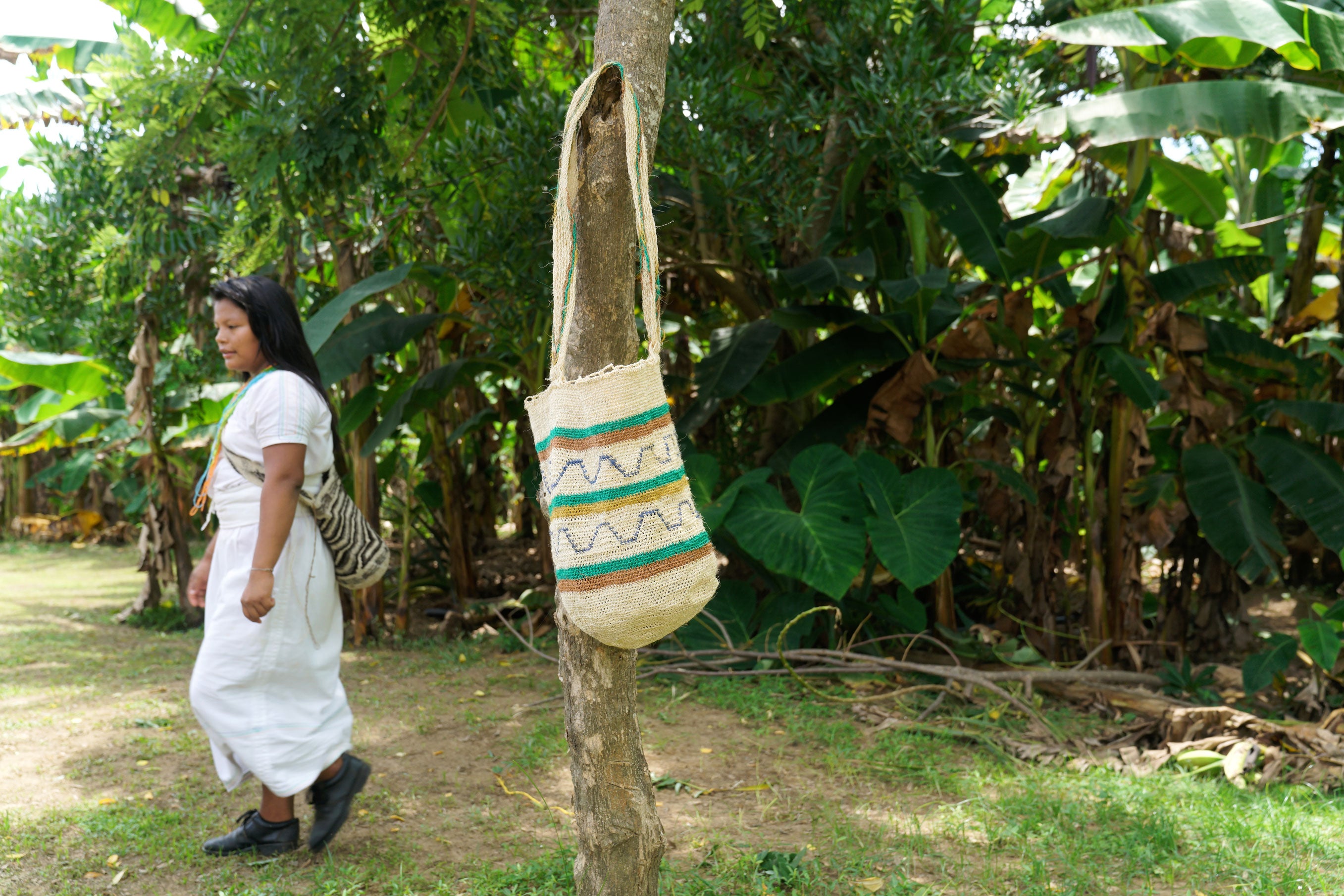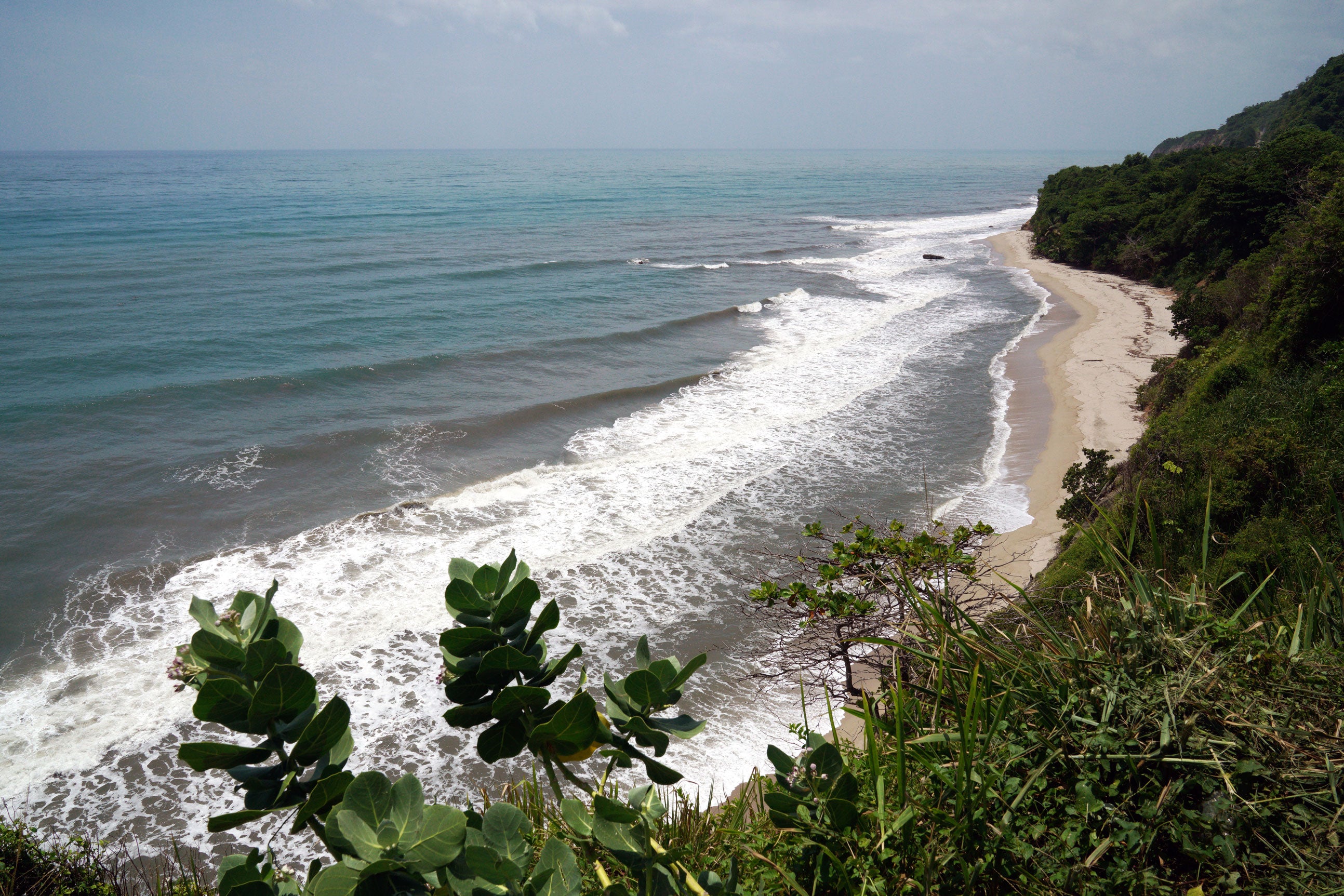MASTER OF CRAFT
A TIGHT-KNIT BOND WITH NATURE
PALOMINO, COLOMBIA
Scroll to explore
The Story
IN CONVERSATION WITH CLEMENCIA PEREZ
ARHUACO WEAVER, PALOMINO COLOMBIA
Clemencia Perez is an Arhuacan mochila knit-weaver who runs a women’s mochila cooperative on her ancestral lands between the Sierra Nevada de Santa Marta mountains and the Caribbean Sea. The predominant design language of the mochila arhuaca is a geometric pattern made from the natural woolen colors from sheep first introduced by the Spanish explorers to the region some five hundred years ago.

Our
CLEMENCIA PEREZ , ARHUACO WEAVER
tradition is that
mochilas are made
with love.
S+O — DESCRIBE THE ARHUACO TRIBE AND YOUR RELATIONSHIP TO THIS LAND.
Perez — The Arhuaco are one of the few remaining tribes living between the Sierra Nevada de Santa Marta mountains and the Caribbean Sea. We believe that we are the big brothers and sisters of the environment because we take care of this land, here at the seaside, all the way to the top of the mountains. We believe we teach and guide others to protect nature.
S+O — HOW IMPORTANT IS THE ARTISTRY OF MOCHILA TO YOUR COMMUNITY?
Perez — We were born encircled in the artistry of the mochila. It’s been a part of our ancestors’ culture for so long. In the beginning, they were only made for personal use. Now we have a different way of life, and it has become a necessity to sell them in order to support our livelihood.


S+O — HOW ARE YOUR MOCHILA DESIGNS DIFFERENT FROM ONES MADE BY THE OTHER TRIBES?
Perez —We use two types of materials, the fique plant which is native to this region, and sheep wool. The Wayuu, for example, do not use any wool. The woolen thread was an innovation that was introduced to us by the Spanish explorers. Today, this is what we mainly use although we continue to make the fique versions as well. Women and children tend to use the wool mochila designs, and carry their supplies. We use geometric designs that have a special meaning in our community. The designs mainly represent patterns that we inherited from our ancestors. They often portray expressions of nature, like the snowy mountains, or vegetation seen here.


S+O — HOW MUCH TIME DOES IT TAKE TO MAKE A MOCHILA?
Perez — It generally depends on the size of the mochila. We’ll usually work on a bag for four to six hours a day. It takes time, and the weaver woman must feel that the precious time invested into making that mochila was worth it. There must not be any anger in the heart. If there is anger, then the mochila design would come out bad. So for this reason, we often like to be together while making a design. We work on our designs individually, but we need to be united and help each other out to ensure we are integrating them wisely into our traditions. Our tradition is that mochila designs are made with love. That is how our mothers and grandmothers taught us.
S+O — HOW DOES THE TIME ALLOTTED REFLECT THE PRICING OF YOUR DESIGNS?
Perez —It’s an investment of time, and I often think the mochila hasn’t always been given its actual value. This is why we are now a cooperative, we want to recognize the time and effort it takes for the women to make the mochila.
S+O — HOW IS THE UNION OF SISTERHOOD REFLECTED IN YOUR WORK?
Perez — There is definitely a feeling of sisterhood that we share. It’s a beautiful aspect of making the mochila. If we find better ways of doing things, we share them with each other. We are teaching the new generation how to do this work, and keep the customs that we’ve inherited alive. It is our responsibility to pass this knowledge to our daughters and granddaughters. This is the way we live, immersed in these customs and close to the land. It makes us all proud.

It takes
time, and the
woman must feel that the
time she invested was
worth it.
Credits
Photography by Victor Raison
Film by Nelson David Gutierrez
Special Acknowledgments - Nelson Garcia and the Arhuacan people of Kuntunsama.
The Objects
Exclusive Edition 015 \ Arhuaco Mochila
The Arhuacan mochila is knit-woven to communicate a woman's love for her family and their idyllic lifestyle living in harmony with their natural surroundings in Northern Colombia. Their most notable designs are fabricated in graphic patterns and fashioned from undyed sheep wool.
The Destination
PALOMINO, COLOMBIA
Palomino is a seaside town meeting the foothills of the lush jungle mountains of the Sierra Nevada de Santa Marta where the most prominent of the indigenous Colombian tribes reside, including the Kogi and Arhuaco. While currently accommodating the intrepid traveler and backpack set, the natural beauty of the setting along with the mystical energy of the nearby tribal lands that offer easy accessibility and myriad accommodations will surely set the destination up to be the Goa or Tulum of Colombia.



